Lee Jae-myung’s “pragmatic diplomacy”
입력 2025.06.05 (03:38)
읽어주기 기능은 크롬기반의
브라우저에서만 사용하실 수 있습니다.
[Anchor]
The launch of the Lee Jae-myung administration is set to resume normal diplomatic relations, which has been in a six-month hiatus.
Pragmatic diplomacy will not only focus on the Korea-U.S.-Japan trilateral cooperation but also on maintaining relations with China and North Korea. But the reality is challenging.
Reporter Kim Kyung-jin forecasts how pragmatic diplomacy will unfold in the future.
[Report]
[President Lee Jae-myung: "We will strengthen Korea-U.S.-Japan cooperation based on the Korea-U.S. alliance and approach it from the perspectives of national interest and pragmatism."]
The core of 'pragmatic diplomacy' is to respond flexibly to situations based on 'national interest' without having pre-determined answers.
However, the reality is not easy.
First, there are demands from the U.S. for increased tariffs and pressure to share security costs, along with the issue of reducing U.S. troops in South Korea coming to the forefront.
With the Korea-U.S. alliance, which is the central axis of our diplomacy, we are in a position where calculations must be made.
Another challenge is finding our position amid the ongoing strategic rivalry between the U.S. and China.
The U.S. is trying to actively leverage South Korea in its economic strategy against China, and it is our challenge to find a clever strategy that satisfies the conflicting demands of both the U.S. and China.
Another challenge for the new administration is how to respond to North Korea’s increasingly sophisticated nuclear capabilities, as well as how to prevent South Korea from being sidelined in U.S.-North Korea dialogue.
[Jeon Bong-geun/Honorary Professor at the National Diplomatic Academy: "The burden of security concerns related to North Korea are growing, while there is also the burden of taking on the responsibility of keeping China in check. Now, South Korea is so close to China (geographically and economically)..."]
The first meeting with President Trump is likely to take place at the G7 summit in mid-June or the NATO summit at the end of this month, and it is reported that President Lee is reviewing the attendance to the upcoming events.
Separately, there are plans to push for a Korea-U.S. summit next month.
Furthermore, at the APEC summit to be held in Gyeongju at the end of October, not only a Korea-U.S. summit but also Korea-China and U.S.-China summits are expected to take place, necessitating thorough preparation to safeguard national interests.
KBS News, Kim Kyung-jin.
The launch of the Lee Jae-myung administration is set to resume normal diplomatic relations, which has been in a six-month hiatus.
Pragmatic diplomacy will not only focus on the Korea-U.S.-Japan trilateral cooperation but also on maintaining relations with China and North Korea. But the reality is challenging.
Reporter Kim Kyung-jin forecasts how pragmatic diplomacy will unfold in the future.
[Report]
[President Lee Jae-myung: "We will strengthen Korea-U.S.-Japan cooperation based on the Korea-U.S. alliance and approach it from the perspectives of national interest and pragmatism."]
The core of 'pragmatic diplomacy' is to respond flexibly to situations based on 'national interest' without having pre-determined answers.
However, the reality is not easy.
First, there are demands from the U.S. for increased tariffs and pressure to share security costs, along with the issue of reducing U.S. troops in South Korea coming to the forefront.
With the Korea-U.S. alliance, which is the central axis of our diplomacy, we are in a position where calculations must be made.
Another challenge is finding our position amid the ongoing strategic rivalry between the U.S. and China.
The U.S. is trying to actively leverage South Korea in its economic strategy against China, and it is our challenge to find a clever strategy that satisfies the conflicting demands of both the U.S. and China.
Another challenge for the new administration is how to respond to North Korea’s increasingly sophisticated nuclear capabilities, as well as how to prevent South Korea from being sidelined in U.S.-North Korea dialogue.
[Jeon Bong-geun/Honorary Professor at the National Diplomatic Academy: "The burden of security concerns related to North Korea are growing, while there is also the burden of taking on the responsibility of keeping China in check. Now, South Korea is so close to China (geographically and economically)..."]
The first meeting with President Trump is likely to take place at the G7 summit in mid-June or the NATO summit at the end of this month, and it is reported that President Lee is reviewing the attendance to the upcoming events.
Separately, there are plans to push for a Korea-U.S. summit next month.
Furthermore, at the APEC summit to be held in Gyeongju at the end of October, not only a Korea-U.S. summit but also Korea-China and U.S.-China summits are expected to take place, necessitating thorough preparation to safeguard national interests.
KBS News, Kim Kyung-jin.
■ 제보하기
▷ 카카오톡 : 'KBS제보' 검색, 채널 추가
▷ 전화 : 02-781-1234, 4444
▷ 이메일 : kbs1234@kbs.co.kr
▷ 유튜브, 네이버, 카카오에서도 KBS뉴스를 구독해주세요!
- Lee Jae-myung’s “pragmatic diplomacy”
-
- 입력 2025-06-05 03:38:48
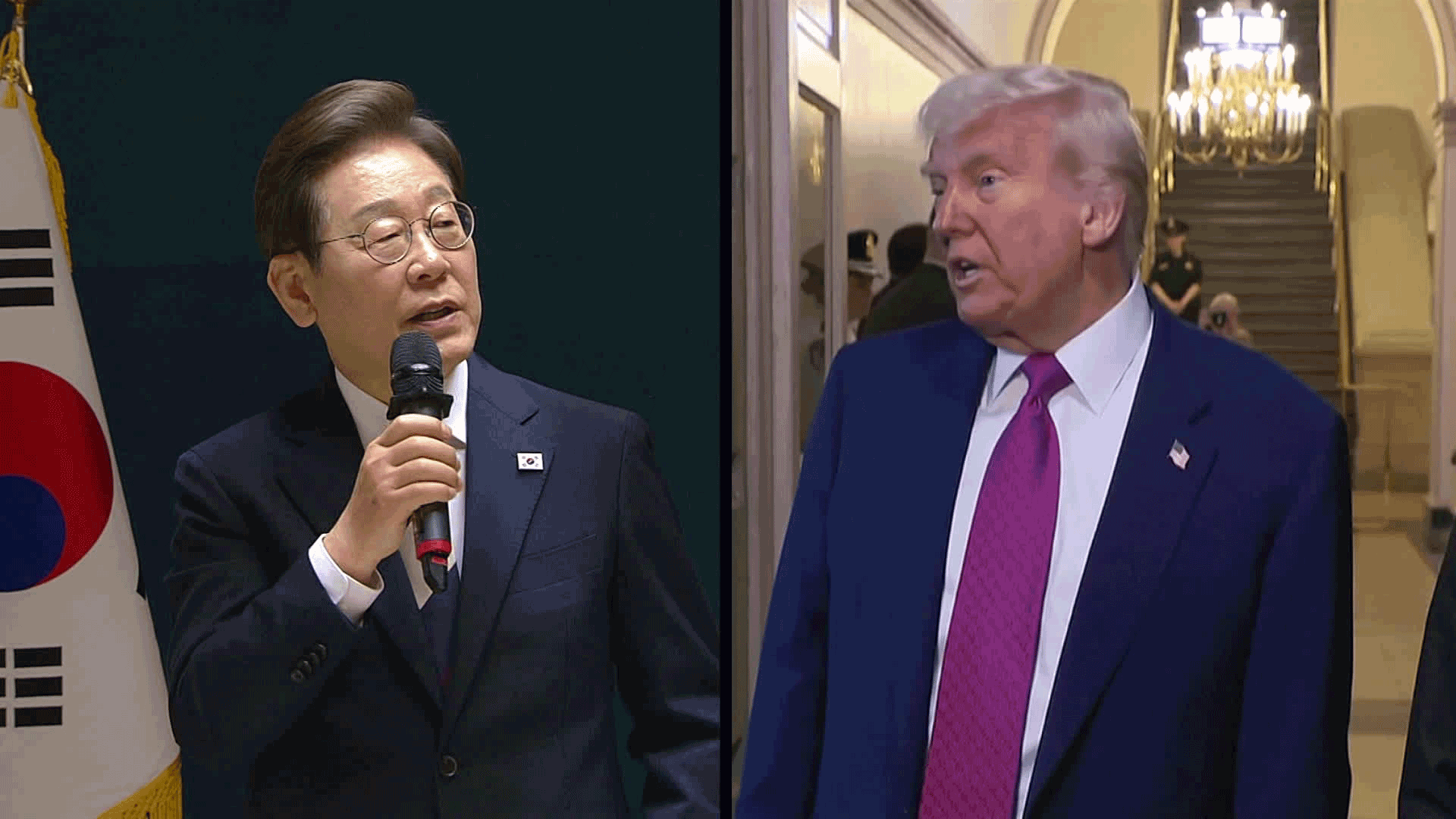
[Anchor]
The launch of the Lee Jae-myung administration is set to resume normal diplomatic relations, which has been in a six-month hiatus.
Pragmatic diplomacy will not only focus on the Korea-U.S.-Japan trilateral cooperation but also on maintaining relations with China and North Korea. But the reality is challenging.
Reporter Kim Kyung-jin forecasts how pragmatic diplomacy will unfold in the future.
[Report]
[President Lee Jae-myung: "We will strengthen Korea-U.S.-Japan cooperation based on the Korea-U.S. alliance and approach it from the perspectives of national interest and pragmatism."]
The core of 'pragmatic diplomacy' is to respond flexibly to situations based on 'national interest' without having pre-determined answers.
However, the reality is not easy.
First, there are demands from the U.S. for increased tariffs and pressure to share security costs, along with the issue of reducing U.S. troops in South Korea coming to the forefront.
With the Korea-U.S. alliance, which is the central axis of our diplomacy, we are in a position where calculations must be made.
Another challenge is finding our position amid the ongoing strategic rivalry between the U.S. and China.
The U.S. is trying to actively leverage South Korea in its economic strategy against China, and it is our challenge to find a clever strategy that satisfies the conflicting demands of both the U.S. and China.
Another challenge for the new administration is how to respond to North Korea’s increasingly sophisticated nuclear capabilities, as well as how to prevent South Korea from being sidelined in U.S.-North Korea dialogue.
[Jeon Bong-geun/Honorary Professor at the National Diplomatic Academy: "The burden of security concerns related to North Korea are growing, while there is also the burden of taking on the responsibility of keeping China in check. Now, South Korea is so close to China (geographically and economically)..."]
The first meeting with President Trump is likely to take place at the G7 summit in mid-June or the NATO summit at the end of this month, and it is reported that President Lee is reviewing the attendance to the upcoming events.
Separately, there are plans to push for a Korea-U.S. summit next month.
Furthermore, at the APEC summit to be held in Gyeongju at the end of October, not only a Korea-U.S. summit but also Korea-China and U.S.-China summits are expected to take place, necessitating thorough preparation to safeguard national interests.
KBS News, Kim Kyung-jin.
The launch of the Lee Jae-myung administration is set to resume normal diplomatic relations, which has been in a six-month hiatus.
Pragmatic diplomacy will not only focus on the Korea-U.S.-Japan trilateral cooperation but also on maintaining relations with China and North Korea. But the reality is challenging.
Reporter Kim Kyung-jin forecasts how pragmatic diplomacy will unfold in the future.
[Report]
[President Lee Jae-myung: "We will strengthen Korea-U.S.-Japan cooperation based on the Korea-U.S. alliance and approach it from the perspectives of national interest and pragmatism."]
The core of 'pragmatic diplomacy' is to respond flexibly to situations based on 'national interest' without having pre-determined answers.
However, the reality is not easy.
First, there are demands from the U.S. for increased tariffs and pressure to share security costs, along with the issue of reducing U.S. troops in South Korea coming to the forefront.
With the Korea-U.S. alliance, which is the central axis of our diplomacy, we are in a position where calculations must be made.
Another challenge is finding our position amid the ongoing strategic rivalry between the U.S. and China.
The U.S. is trying to actively leverage South Korea in its economic strategy against China, and it is our challenge to find a clever strategy that satisfies the conflicting demands of both the U.S. and China.
Another challenge for the new administration is how to respond to North Korea’s increasingly sophisticated nuclear capabilities, as well as how to prevent South Korea from being sidelined in U.S.-North Korea dialogue.
[Jeon Bong-geun/Honorary Professor at the National Diplomatic Academy: "The burden of security concerns related to North Korea are growing, while there is also the burden of taking on the responsibility of keeping China in check. Now, South Korea is so close to China (geographically and economically)..."]
The first meeting with President Trump is likely to take place at the G7 summit in mid-June or the NATO summit at the end of this month, and it is reported that President Lee is reviewing the attendance to the upcoming events.
Separately, there are plans to push for a Korea-U.S. summit next month.
Furthermore, at the APEC summit to be held in Gyeongju at the end of October, not only a Korea-U.S. summit but also Korea-China and U.S.-China summits are expected to take place, necessitating thorough preparation to safeguard national interests.
KBS News, Kim Kyung-jin.
-
-
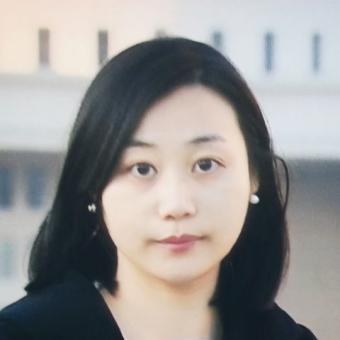
김경진 기자 kjkim@kbs.co.kr
김경진 기자의 기사 모음
-
이 기사가 좋으셨다면
-
좋아요
0
-
응원해요
0
-
후속 원해요
0










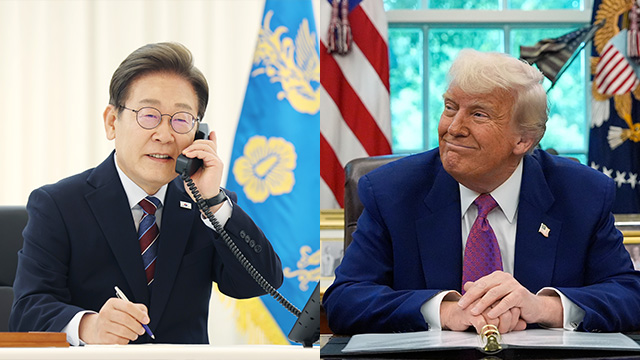

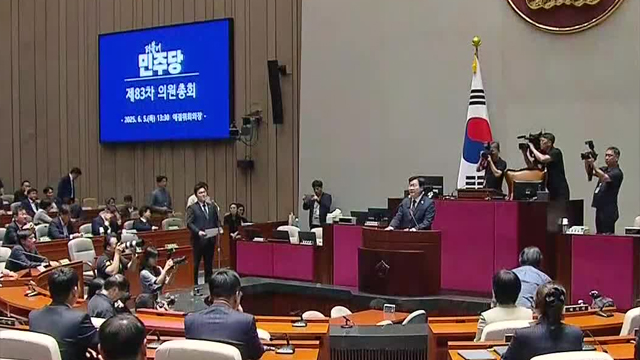
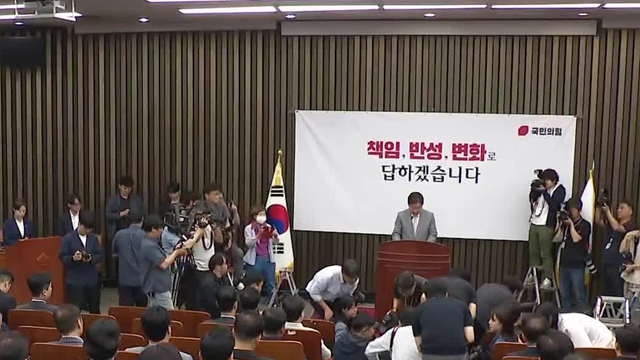

이 기사에 대한 의견을 남겨주세요.